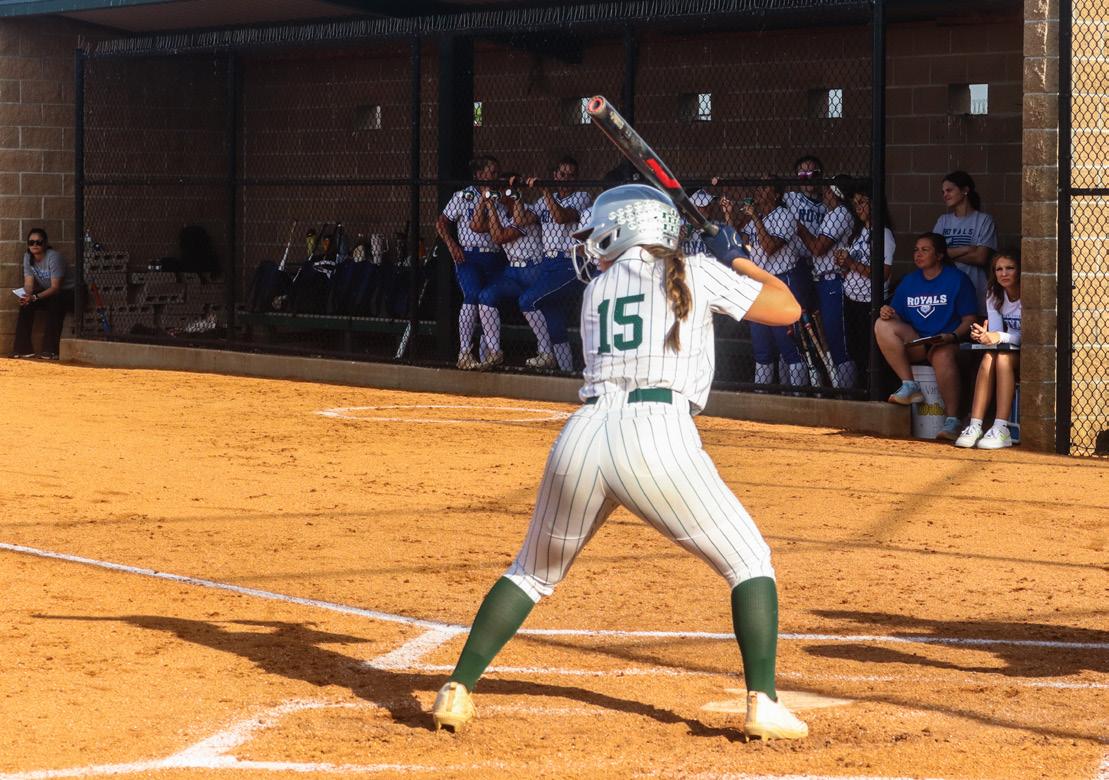

Editors-in-Chief
Adanna Mbanu & Madeline Wilson
Don’t forget to follow us on Instagram!



Don’t forget to follow us on Instagram!
When I became editor-in-chief with Adanna 12 months ago, it was hard to imagine successfully releasing the first of this year’s magazines, let alone the moment when you all would hold in your hands the final issue of the 2023-24 Harbinger. But that moment has now arrived, and I am so thankful to have gone on this journey with my staff and with all of you.
From the 2023 Freshman Issue to this May 2024 Issue, I have learned so much about journalism, leadership, and myself. Over the last year, the Harbinger staff has become a close-knit community capable of coming together to produce work worthy of winning state and national awards. There is so much I will miss: the energetic outpouring of ideas in storyboards, the moment of anticipation and excitement when the first box of new magazines is opened, even the hours spent finalizing each issue. I know I will carry the memories of this year’s Harbinger with me as I take the next steps in my education.

Staff
Editors-in-Chief
Adanna Mbanu
Madeline Wilson
Design Editor
Josie Brackett
Photo Editor
Matthew Orbaugh
Social Media Editor
Emma Hummer
Arts & Graphics
Editors
Kate Bowen
Jonah Hunter
Staff Manager
Srinithya Basireddy
News Editor
Brody Brown
Sports Editor
Lilly Steele
Feature Editor
Emmy Lucas
Student Life Editor
Ellie Vanderbur
Opinion Editor
Marissa Villarrubia
Staff
Grace Adlong
Summer Barker
Lucy Bean
Anna Helmer
Morgan Hollis
Samantha Kulwicki
Thank you to every one of you who made this year’s Harbinger what it was—everyone we interviewed, everyone who read the magazine or interacted with our social media, and of course all of the people whose hard work built this newsmagazine.
Of course, the final issue of the 2023-24 Harbinger is accompanied by the passing down of the leadership of our newsmagazine. Adanna and I leave the Harbinger in the very capable hands of Emma Hummer and Marissa Villarrubia, this year’s social media editor and opinion editor. I cannot wait to watch the newsmagazine grow under their lead as editors in chief.

Seniors won’t be the only ones leaving the nest for good. Our beloved principal Tim East will be retiring from his position after 14 years. Students will miss his friendly, approachable nature.
Karen McDaniel has been hired as the school’s new principal, effective this summer. McDaniel currently works as an assistant principal at Carmel High School and has shown in conversations with Harbinger staff members her excitement for her new position as ZCHS principal.
Some of our staff have had the pleasure of meeting McDaniel, and we’re all in agreement that she is sweet and dedicated to her job as an educator. She shared how she loves engaging with every person in the school, whether it be teachers, students or other administrators. She’s even pitched ideas for the new school year to listen to and better connect with students.
Many people are under the impression that because McDaniel is from Carmel and served as a disciplinarian, that she has a negative agenda with coming to Zionsville. This simply isn’t true from what we’ve seen and heard. McDaniel’s conversations with Harbinger staff members have us convinced she wants students to enjoy their time at the high school and love learning.
Keep an open mind about the big change happening. Don’t let rumors or misconceptions make up your mind for you. See for yourself who Karen McDaniel truly is. And don’t forget to thank Mr. East for all the wonderful work he has done for our school. Although he is leaving the nest, he will always be an Eagle.
The mission of the Harbinger is to provide timely, relevant, and interesting content, while handling topics with respect and objectively. Harbinger aims to reflect the diverse nature of the student body of ZCHS by including those of all walks of life in the publication. The Harbinger serves as a public forum and invites letters to the editor and communication from others. The Harbinger is student-run and opinions in the magazine do not necessarily represent those of ZCHS or Zionsville Community Schools.

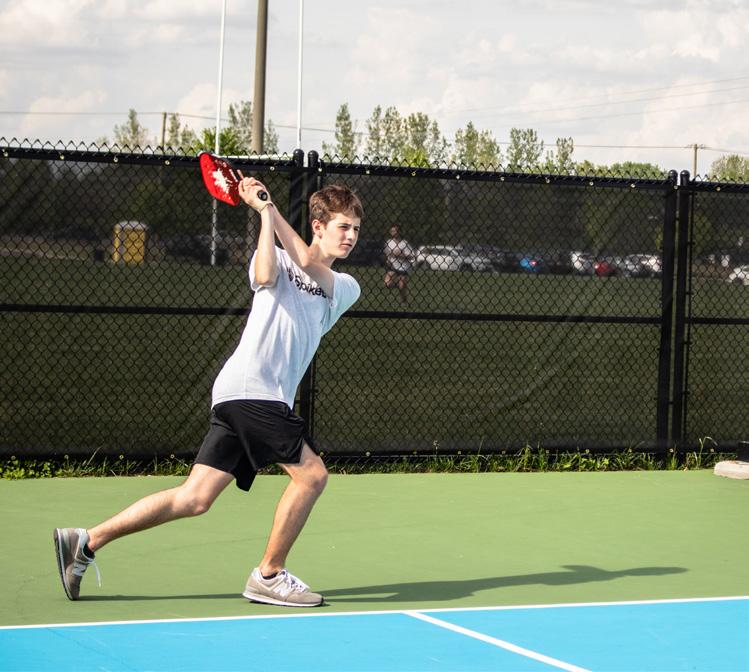

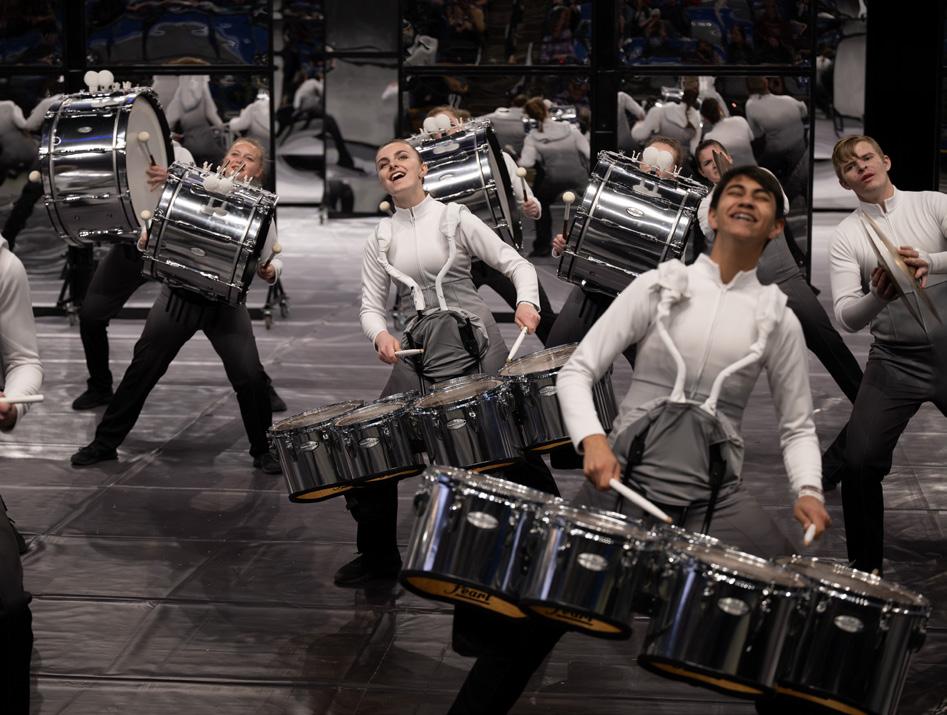
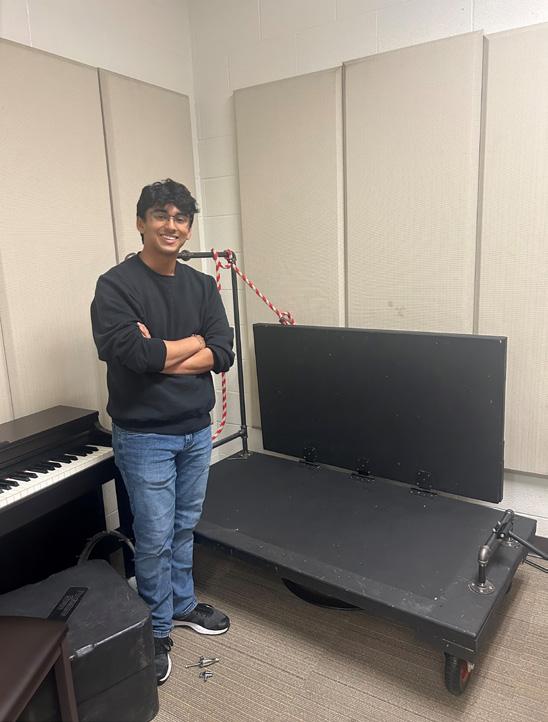
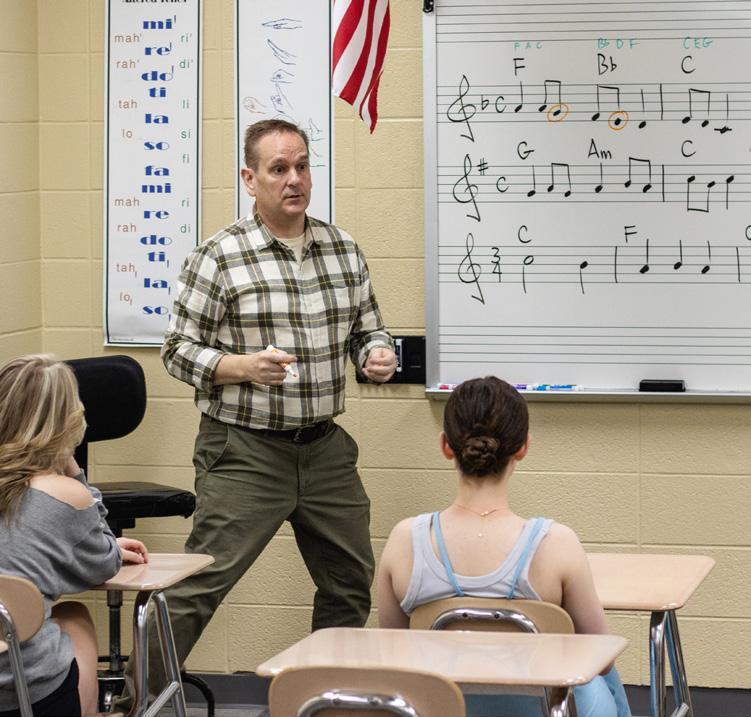

After dedicating 14 years to Zionsville, Tim East will be taking his last steps down the hallways of ZCHS at the end of May, retiring from his position as principal.
East said the start to his journey began with his own high school teacher who instilled in him a desire to help students grow.
“I watched how the way he interacted with all of his students made a positive impact, to help people like me see what a purpose in our life could be and how we could give back to the community and serve kids in a lot of ways,” East said. “I thought, ‘I want to be like that guy’ and so that was kind of at the heart of my early inspiration to become a teacher.”
While East originally planned to become a teacher, he also found himself taking on more leadership roles in the community.
“I really didn’t have any intention of being principal,” East said. “But I have some skills in bringing people together, celebrating what they do, whether it’s our students or our teachers, and helping them to serve students well. And that was the accidental pathway I took to becoming a school leader.”
Throughout his time in Zionsville schools, East has also served as principal at Eagle Elementary and Zionsville West Middle School.
Despite being at different schools, East said his goal has always been to ensure students feel relaxed and comfortable at school. He is well known for attending after school events.
“I hope that being present and being a part of so many things helps students to feel comfortable and that I’m able to help them,” East said.
His goal for students is to create the atmosphere that “Everybody belongs here.”
East has become a mentor to many students here, including senior Mackenna Jensen. After meeting him during her time in the football press box as dance team manager, she considers him a mentor.
Jensen said his kindness and talkative nature created that connection. Whenever she
sees him, they stop for a quick chat where Jensen says she feels she can talk about anything.
“I feel so lucky to have him,” Jensen said. “Mr. East is always just like a smiling friendly face.”
Building relationships with students has had a big impact on many, such as senior Annie Davidson. She bonded with East during a trip to France hosted by the school during spring break.
“He wanted to be like a friend’s dad,” Davidson said. “Like we shouldn’t have to worry about being ourselves around him just because he’s our principal and he really wanted to get to know us.”
East has always enjoyed getting to see the work that the students of Zionsville had produced.
“All the things that our students do, robotics, journalism, performing arts, athletics,” East said. “That’s how I get the most reward, when I get those interactions.”
His support is one of the many reasons students have grown to love East.
“Getting to know the kind of person that he is and how much he genuinely cares about all of his students here, even though he doesn’t have the opportunity to meet all of them, it just shows what a good principal [he is],” Davidson said.
Not only does East feel as though interactions with the students are important, but building a strong sense of community among all the staff members is a priority. For East, it all starts when a teacher joins the school.
“We talk about who they are as a person first. So, I get to know about them, their in terests, their families, hobbies,” East said.
East values one-on-one interactions with staff members, even after they settle into their roles. Assistant Principal Matt Walter said East liked to be personal with the individuals he worked with.
“There was a time when the payroll department would deliver a piece of the little envelope a piece of paper for every employee,” Walters said. “And instead of
putting them in their mailboxes, Mr. East would walk the building every payday and hand each person their little envelope with their deposit notice in it.”
Many things have made East successful, including his relationships and ability to be proactive and a strong communicator. Reflecting on his time as the principal, East emphasized personal growth.
“I always believed in students and wanted to help them grow, but maybe had some limiting factors in my mind based on my own personal experiences,” East said. “We’ve had students who’ve left here who’ve made great careers in the military, left here and started their own companies and are working in the business world. Some have gone on to college and have now completed advanced degrees since their time here. I think that’s an area I’ve really grown in and seeing that there’s more potential in every student than maybe I originally gave everybody credit for.”
While ZCHS readies for its new chapter, students will always remember East.
“I couldn’t imagine going here and going to football games and all that kind of stuff without Mr. East,” Davidson said.
As East prepares to leave ZCHS, he offers advice for future students.
“If your interest is rugby, go play rugby. If your interest is robotics, get involved with the Robotics Club. If you’re a performing artist, get involved. If you’re a fine artist, get involved,” East said. ”Find your spot. Find your passion.”

Imagine a school year where backpacks aren’t weighed down with lists of required supplies and parents take a sigh of relief as the burden of required back-to-school shopping is lifted. That’s the vision behind a new law aimed at lightening the load for families and ensuring every student has access to the tools they need to succeed. Say goodbye to pricey late-summer shopping trips and hello to a simpler, fairer system for all–or is it?
The Indiana legislature passed a law in the spring of 2023 stating public schools must provide all the necessary school supplies for students, such as paper, pencils, art supplies, calculators, laptops, and books. A school corporation survey requirement was added to this law this year to ensure schools are complying.
This law prohibits schools from charging students for “curricular materials.” School districts across the state of Indiana are working to understand how this will impact schools, teachers, and students. However, there is some confusion about whether the school supply list is actually gone for good.
All public schools are required to participate in the annual survey to be eligible to receive a distribution from the statewide curricular materials fund, which includes tax information and what the school has spent. Zionsville Community Schools is the lowest funded school district in the state, according to assistant superintendent Kris Devereaux. As a way to make up for this, in the past parents paid for many supplies, such as project materials or books for high school English classes, which students then owned.
With the new law in place, Zionsville schools can no longer rely on parents to provide the required supplies.
Teachers are now working to create

supplies lists for the school to order and in some cases rethinking units and activities based on these changes.
“If we need something, I think the school is going to find a way to help us,” Grace Fletcher, Fiber Arts and Intro to 3D art teacher, said. “If there is some type of large budget cut it could affect us, but we would find alternative materials.”
Fletcher does not believe that different art classes would be affected more than others because every class needs a large amount of supplies. If in the future they face larger budget cuts, some classes might find projects that use supplies found in nature or do more “thrifty” projects. She does not believe that the classes will be highly impacted by the change.
English teachers are in a similar situation, but instead of markers and clay they are worried about books. Because students’ parents are now not going to pay for the books their students read in class, students will hand back in their assigned reading books at the end of each unit.
“15 years ago, we mostly did it this way, even though the law wasn’t telling us that we had to do the loaner thing or that we couldn’t ask students to buy all those books,” English department head Doug Showley said. “We as a school are obliged to now put those [books] in your hand.”
Like Fletcher, Showley does not believe that this bill will have that big of an impact on the school’s English curriculum or the way they teach. The only difference he could point out was annotation.
Many students have gotten used to annotating, writing or highlighting directly on the pages of their books and that will no longer be allowed.
Showley said using sticky notes may be an alternative to writing notes directly on the page. When teachers ask students to annotate a specific passage, Showley said he will be printing out that passage for the students. However, students will still have the option to buy their own books if they want to write in them.
According to Calculus teacher Sarah Essick, the only big change in math classes will be the graphing calculators that upperclassmen use for Algebra II, Pre-Calculus, and Calculus. The school will provide these calculators in class and for homework outside of class, they will provide access to an app that is a graphing calculator.
Although some classes might be more affected than others, most teachers are confident they will be able to find work-arounds and alternate projects. And, students and parents can always choose to still buy their own, preferred supplies. They are just no longer required to.
Indiana legislators passed a law this year banning the use of electronics, specifically cell phones, computers, and gaming devices during class time, effective next school year. The law requires schools to create policies that will keep electronics out of students hands during instruction and class time, with exceptions for use for academic purposes, emergencies or for health reasons. Zionsville Community Schools has not yet announced the new policy for the high school.
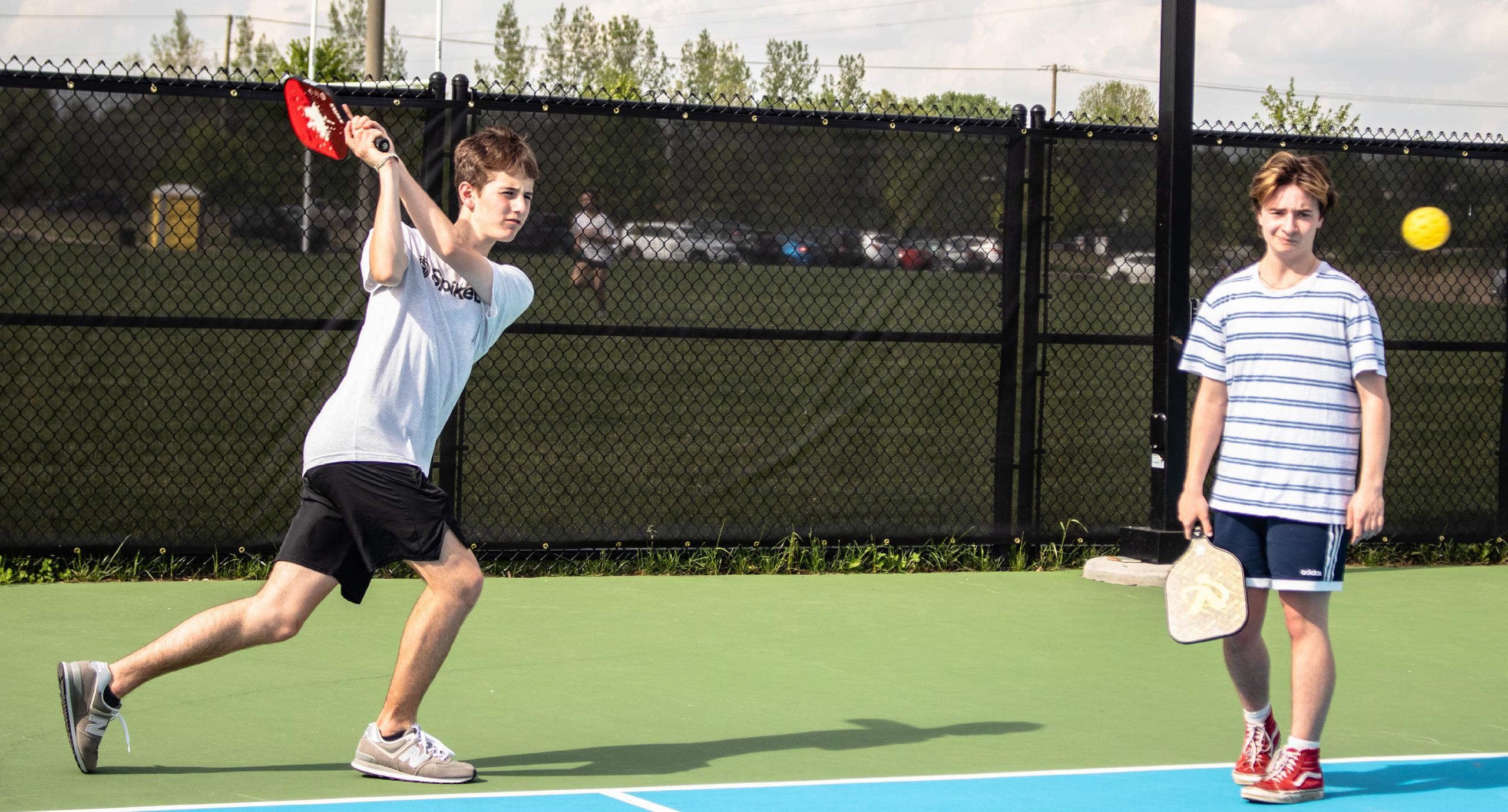
On a hot summer day last July, sophomore Daniel Larsen found himself in a heated pickleball match against his own grandparents at their annual family reunion. Even though he lost alongside his older brother, the day remains one of his favorite memories with his family.
In recent years, pickleball’s popularity has risen, growing from a casual pastime to an organized sport. The sport gradually gained attention for its inclusive nature and straightforward rules.
The pickleball courts at Mulberry were built last year, becoming easily available to many Zionsville residents.
“I like to tell people [the courts are] in between a tennis court and a ping pong table,” Daniel Larsen said.
Very similar to tennis, players hit the ball back and forth with paddles. The game is usually played as doubles and goes up to 11 points. The court also has a non-volleying zone called the kitchen, which you cannot enter unless the ball bounces first.
D. Larsen participates in Pickleball Club
along with his sister and president of the club, senior Sophie Larsen.
The Larsens’ love for pickleball started at their family reunions, where they rent a large house and have tournaments.
“My grandpa’s super into it and goes to official events,” D. Larsen said. “Everybody comes out and we all play ball for most of the time.”
Pickleball is more accessible to the general public and easier to play, which shows the inclusivity of the sport, according to D. Larsen.
At first, S. Larsen was confused about the rules, but over time she grew to love it, similar to many newcomers to pickleball. The accessibility of the sport, open gym times, and the “sweet old people” who also played were some of the reasons she was drawn to the sport.
And according to junior Seth Copner, the sport is more beginner-friendly and perfect for people who have never played sports before.
“It’s a fun place to just come to meet new people, get out of your circle, and out
of your comfort zone,” Copner said.“I’m not amazing or stellar at pickleball in any way, but the fun part for me is meeting people that I wouldn’t get the chance to meet inside of school.”
Despite being relatively new to the sport, S. Larsen and her siblings spent hours playing in pickleball open gyms in Carmel.
“There were all these older people [who] go to play every single day and they were just fun,” S. Larsen said.
S. Larsen sends out a Remind on the days the club meets and they gather at Mulberry Fields for 2 hours.
“There are no tryouts, you just show up if you want to,” D. Larsen said. “Sometimes we play a little frisbee or spike ball, too.”
As pickleball continues to grow in popularity, its ability to bring people together across different generations and backgrounds defines the spirit of the sport.
“In school, you stick to your friend groups and I do too, but I think that playing ball breaks that boundary,” Copner said.
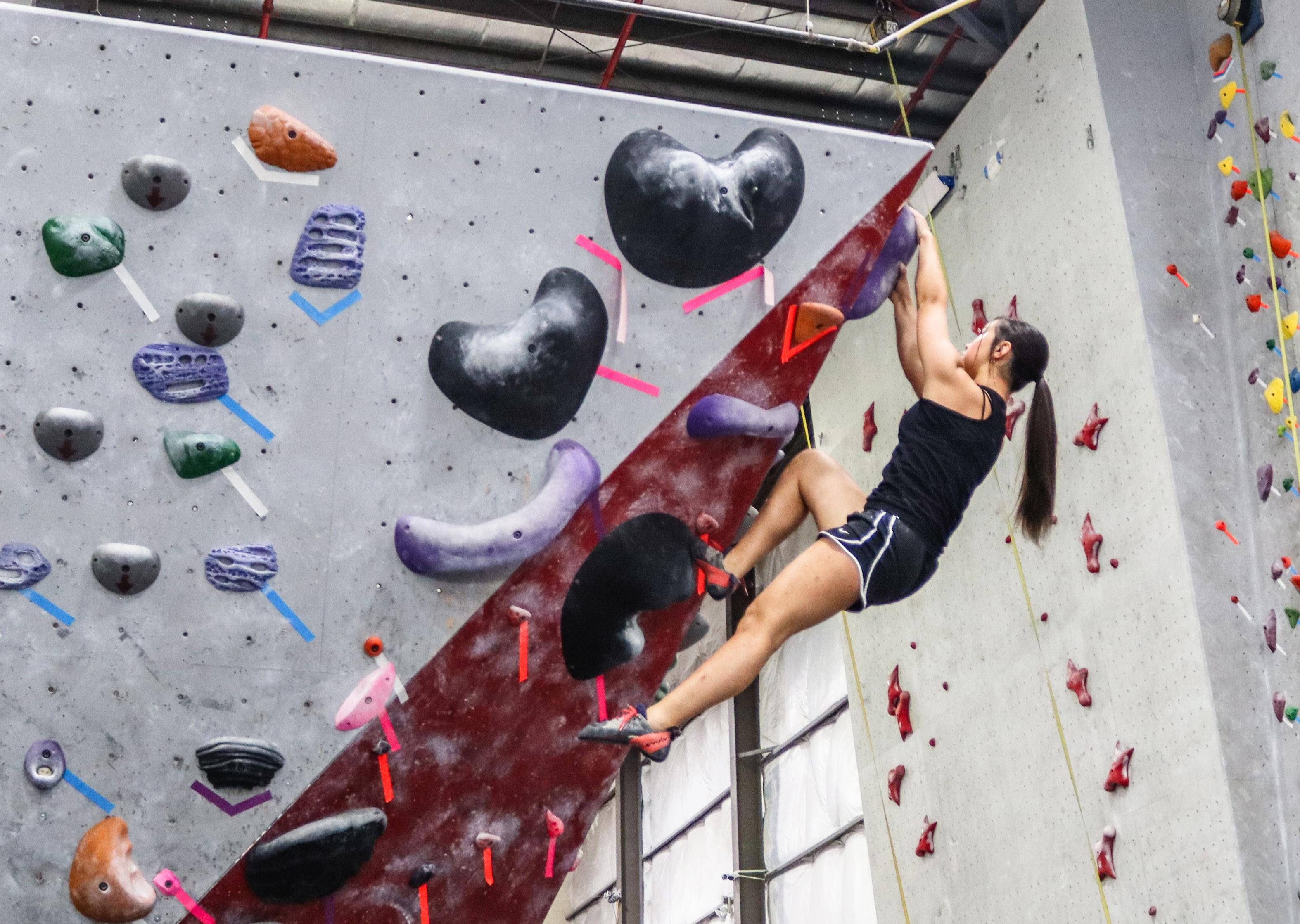
In its second year at the Olympics, Sport Climbing is going through some changes. In the 2020 Olympics, every climber competed in three kinds of climbing: speed, bouldering, and lead. But this year the competition is split into two categories–speed and lead combined with bouldering–allowing athletes to pick an area to specialize in.
For the speed category, there are elimination rounds where the climbers go head to head on identical courses trying to get to the top first. Whoever is the quickest moves on to
the next round, repeating until a gold medal winner is determined.
For the second category, athletes first take part in the lead section where they get six minutes to observe the wall they must climb and then six more minutes to climb as high as they can in one attempt. Then they compete in the bouldering section.
“You have five minutes to look at the route, read it, and climb it to the best of your ability,” sophomore climber Sadie Choi said. “Within those five minutes you can take as
many attempts as you want, but each attempt is going to lower your score.”
The points scored from both sections are then combined, with the top eight scorers moving on to the finals.
The division of this sport into multiple sections has had a warm reception from climbers because of the reduced pressure to excel in all three sections, allowing them to be more specialized and more confident in their performance.
Born in Korea, Taekwondo is a martial art that translates to “the art of kicking and punching.” Taekwondo has been a full medal sport in the Olympic program since the 2000 Olympics held in Sydney, Australia. Many nations have been awarded their first Olympic medal from Taekwondo, including Vietnam, Afghanistan, Gabon, and Niger.
The art of Taekwondo involves two participants throwing punches and kicks in quick succession at each other. The Olympic competition consists of three rounds, each round being two minutes each. Points in Taekwondo are gained based on the difficulty of the skills a participant is showcasing.
Freshman Allison Bowman has been training in Taekwondo for four years.
“My [Taekwondo] school hosts tournaments every year so I compete against other students,” Bowman said. “But it would be cool to compete against people from other states or more.”

The 2024 Olympics is the second year that surfing will be a part of the Olympic program. The French Polynesian island of Tahiti is where the competition will be hosted, specifically at Teahupo’o, a world-renowned surfing spot.
In the competition, surfers will display tricks and skill and are being scored by five judges on the variety of their style, the difficulty of the tricks they perform, and overall control of their board. Between 20-30 minutes, surfers can catch as many waves as they’re able to, and are scored on a scale of 1 to 10. The surfers are ranked on their two highest scoring waves.
From originating in the 1970s in New York City to debuting in the Paris 2024 Sum mer Olympics, breakdanc ing has come a long way in the past 50 years. This urban style of dance features acrobatic movements, complicated footwork, and a DJ that controls the music that the athletes dance to. It gained popularity when it was first used in a competitive environ ment in the 1990s, leading to its ad dition in the Olympics to gain interest from a younger audience.
A total of 32 athletes from all over the world will compete, 16 female and 16 male, with each group competing separately.

Two dancers are paired together during each round of the tournament-style competition, with each taking turns dancing for 60 seconds. There will be nine judges who score each dancer based on six criteria: creativity, personality, technique, versatility, performance skills, and musicality. The performer with the highest score will then move onto the next round, with the final two athletes dancing one last time for the gold medal.
This new and energetic competition not only incorporates interesting visuals and artistic expression but highlights the advanced athletic abilities of the dancers.

BFor decades, surfing had long been advocated for to become a sport in the Olympics, with Olympic freestyle swim champion Duke Kahanamoku the face of support for surfing in the Olympics. In 2020, the Tokyo Olympics finally integrated surfing into the program.
eing featured for the second time in the Olympics this year is skateboarding. Skateboarding as an art and activity has remained on the margins of culture for multiple decades and has only recently gained more popularity. Sophomore Mason Erling has been skating for four years.
“It’s just fun to learn tricks,” Erling said, “It takes maybe hundreds of tries to get a trick down.”
In the Olympics, the competition focus es on two disciplines, street-style and parkstyle. Street-style involves areas that resemble urban environments while park-style involves a typical skate park environment.
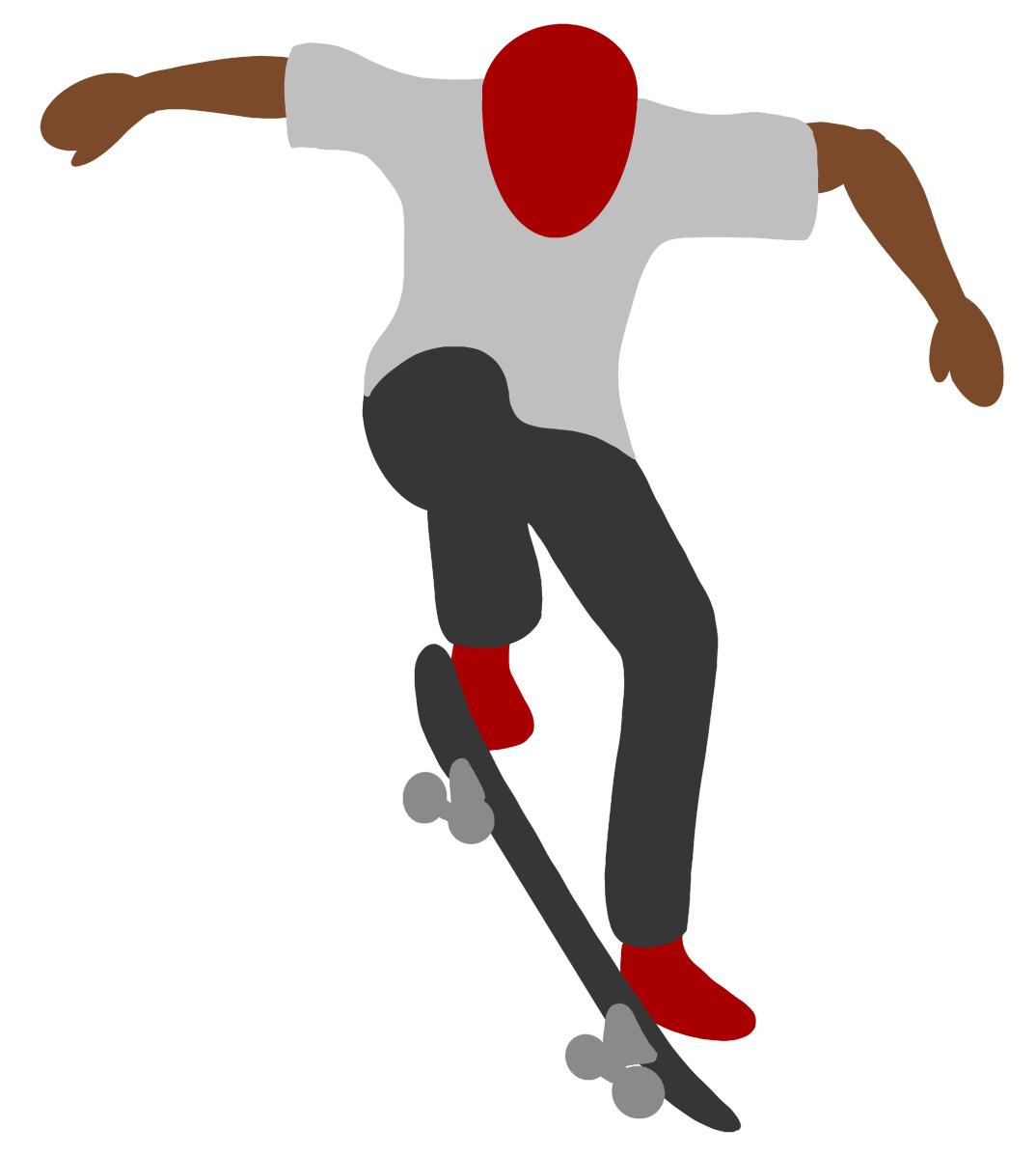
“There’s a lot of different ways to perform any trick, which could make it easier or harder to rank,” Erling said.
To score points, skaters must perform a variety of tricks meeting criteria of difficulty, speed, and capacity to use all surfaces. Each skater performs three 45 second runs, with the best of those three being their final score.
Tension mixed with adrenaline is a common feeling for those in competitive events. Ella Webb, senior and one of the section leaders for the Zionsville Indoor Percussion (ZIP), is no stranger to these emotions. It was April 21, 2023, the semifinal round for the WGI Scholastic Marching Open competition, a very important event for all the percussion groups around the world. Any minute the electronics would start, the gym would be filled with lights and sounds, and the performance would begin. There was only one problem.
The room was quiet.
Webb was poised to start the performance, listening for the song to begin. But it never came. The electronics had malfunctioned,
and the show had been crippled. But to Webb, and the rest of ZIP, this didn’t matter.
“What was amazing was that since we got all of those repetitions during the rehearsals, we were able to do the show as best as possible,” Webb said.
ZIP managed to qualify for the finals, and came home with a fourth place ranking, an accomplishment that was repeated on April 20, 2024, when ZIP beat 36 finalist teams to once again secure fourth place. But even more than these achievements, ZIP is known for the rumors about the group’s strenuous training program.
“Rumors?” Michael Rennaker, lead organizer and director for ZIP, said. “I mean, we rehearse at least four times a week. And
it’s usually pretty run and gun. We take a couple of water breaks on each rehearsal and other than that, it’s all about getting as many repetitions in as we can.”
A difficult schedule alone isn’t enough to bring ZIP’s training program infamy. Another piece to the puzzle can be added by Webb, who reveals the group spends “up to six months working on the same show.”
“It gets kind of exhausting,” Webb said. “You’re just repeating the same thing over and over again. But we know that in the end, the results we want to get, we will get, as long as we keep practicing. So it’s worth it.”
In contrast, Sulise Holbrook, a freshman transfer student new to Zionsville, believes the group could benefit from even more time practicing in the gym. She compared ZIP to her previous school’s marching band, which practiced seven days a week.
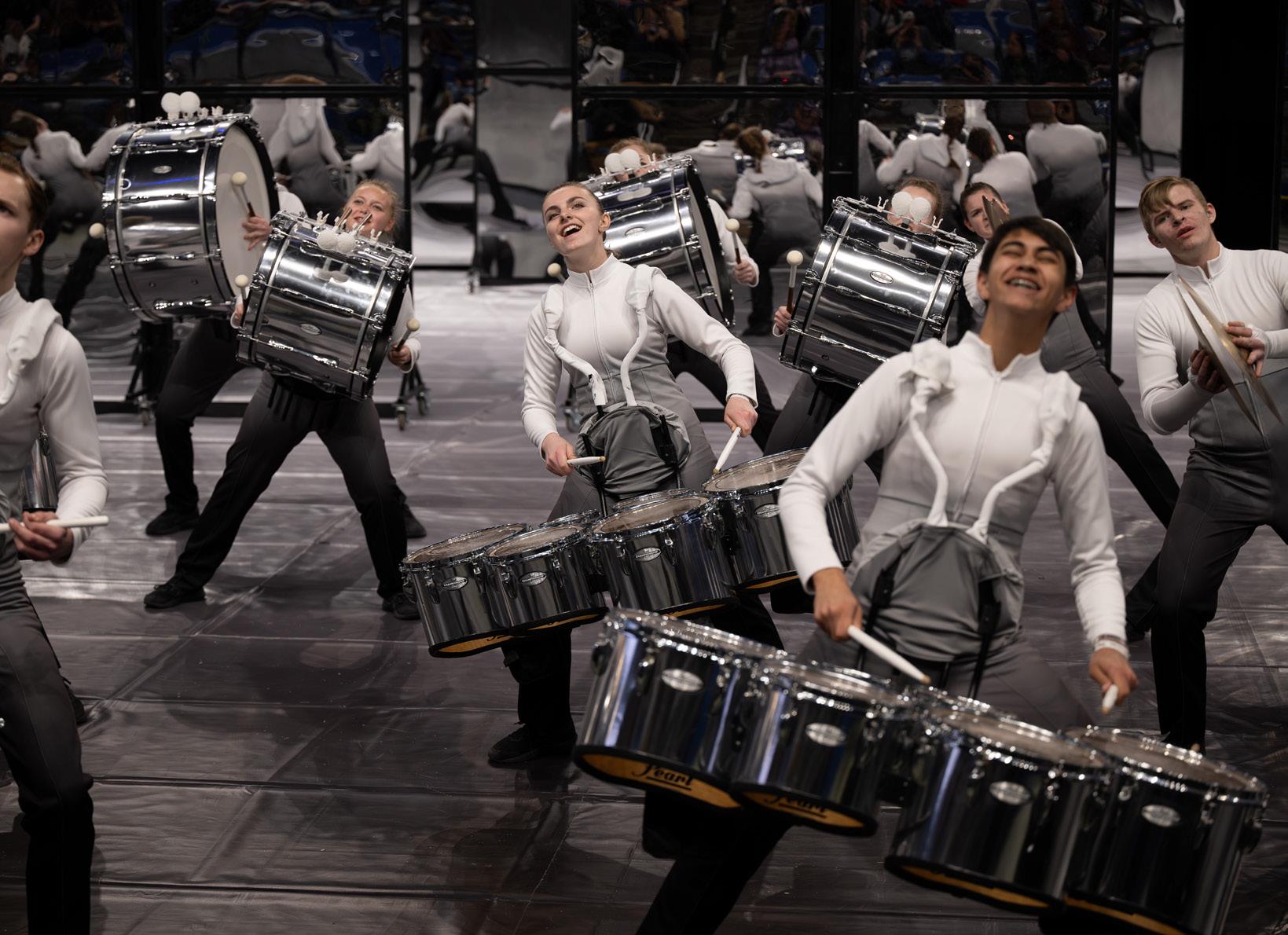
“To be honest, I don’t think we have enough practices,” Holbrook said. “If we had a few more, we would definitely be in a better position.”
This is one thing that unites all members of ZIP: the strive to improve. This ensures every ZIP member, no matter how busy, will make the effort to practice and make the show better, even if those practices are during school breaks.
“Everybody in the group wants to do well and wants to succeed,” Rennaker said. “They realize rehearsal hours are the most important thing in making that happen. Most years I get more questions of why aren’t we rehearsing more over breaks than why we’re rehearsing at all.”
Webb said many members of the group wanted to be part of something “greater than themselves.”
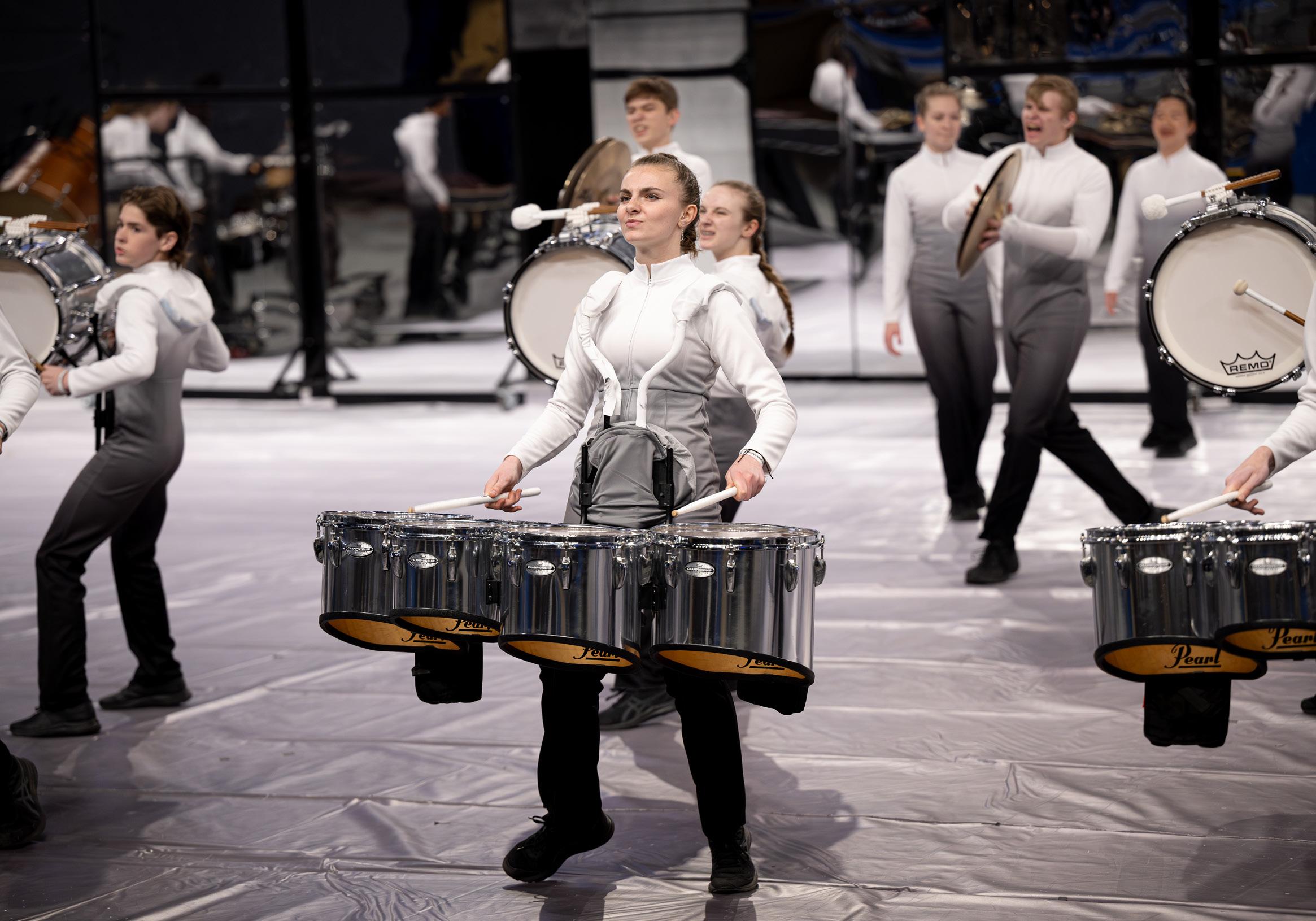
“There's a certain legacy you want to live up to and a tradition that's been established,” Rennaker said. “You understood you are part of something bigger and that requires a commitment, so you were willing to put in the work.”
That extra effort and work all come together on competition day. Webb describes it as going through the everyday rehearsal, with an extra serving of adrenaline.
“People were constantly like ‘We have to do this, and we have to do that,’” Holbrook said. “They’re very passionate about every move we take from the minute we get off the bus until the minute we enter the bus again.”
But what is sacrificed in the pursuit of excellence? A large amount of time is committed to the activity, without adding the workload of being an everyday high schooler. In fact, Webb reveals that for many students “it's kind of hard to schedule haircuts and dentist appointments.”
“Usually, I tell people that outside of school and family, Indoor Percussion is the third most important priority,” Rennaker said. “It requires not only participation in the practices, but a lot of work outside of rehears-
al like individual practice time.”
Notably below these top three focuses is social interaction, an important aspect for the mental health of any teenager. And yet, many in ZIP would agree with Webb and Holbrook, who expressed their experiences finding good friends within the group.
“It honestly makes [making friends] a lot easier because we're around each other so frequently,” Webb said. “It's like we all kind of have this sort of bond. We're all working towards the same goal, and socially, that is your friend group. It's kind of like having a big family.”
Through
all of the practices and rehearsals, the late nights and the full days of competing, what sticks with members of ZIP are the good times that happened along the way.
“Sometimes we'll hear old show music in videos and stuff, and then me and my friends will all start playing it,” Webb said. “It brings back the good memories from the shows.”

The final step to becoming an Eagle Scout is the Eagle Project. The project is used to demonstrate leadership while also giving back to the community. Each scout has to present a written plan that must be approved by multiple people, including the Scout Leader and a district representative.
Sophomore JT Bricker has been shaping his sensory garden Eagle project extensively.
“It provides this little nice area for people with sensory issues,” Bricker said.
The process of building an Eagle project can be tiring. Bricker said that building his
sensory garden involved a lot of paperwork and planning.
“It requires a lot of back and forth to get signed off, make sure things are getting checked off,” said Bricker.
Bricker thinks the most rewarding part of it is seeing the project completed.
“After all that hard work, you can see a complete thing, all your work paying off,” Bricker said.
Junior Isaac Shipchandler has been working on his Eagle Scout project for about a year and a half. He is working with the
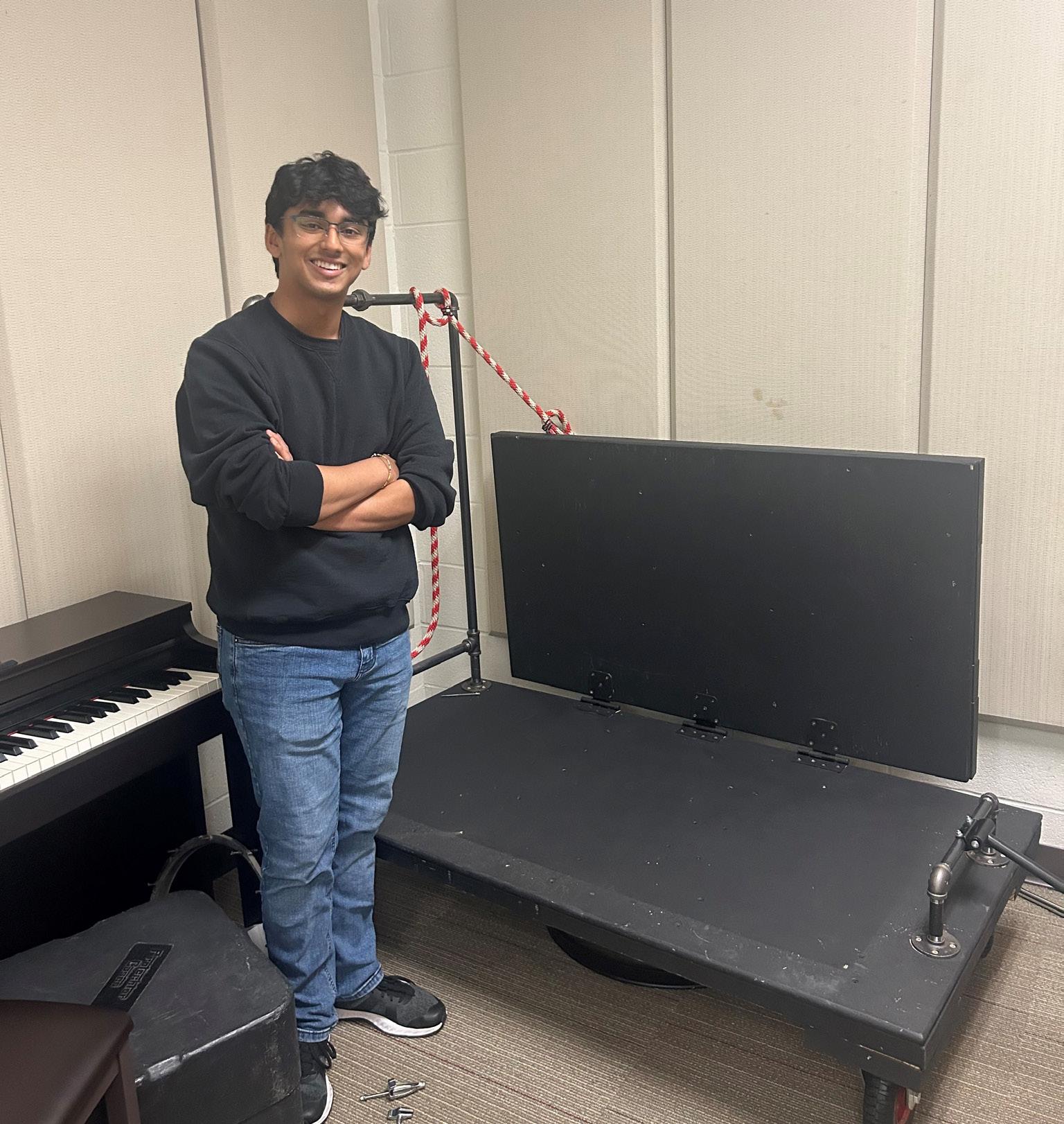
Whitestown Parks Department to build in the parks a geocaching course, a recreational activity in which people use coordinates provided on a website of app to find items.
“This is to help promote awareness and get people to travel to all the different parks,” Shipchandler said.
Shipchandler has had a passion for geocaching for three years and loves spending time in the parks. He wanted to combine these ideas for his project.
“[The parks] are a great place to just enjoy the environment,” Shipchandler said. “I decided to talk to the Parks Department about it and they were all for it.”
Shipchandler has also had multiple volunteers come in to help him test and come up with new ideas.
To promote the course, Shipchandler plans to post about it on the Whitestown Parks Department's social media page to reach people in both Zionsville and Whitestown, as well as putting up flyers around town.
Shivam Dave, senior, recently finished his Eagle project, which was a brand new drumset cart for the ZCHS marching band.
“I'm a member of our marching band so I felt like we could always use some better equipment,” Dave said.
The marching band has to get on and off the field promptly, so the drumset cart helps them to begin and end their shows more swiftly. Although Dave said the process of building the cart was difficult and required a lot of planning, it was rewarding for him to lead his project.
“That's something I know I'm going to have to do in the future, and I always like the opportunity to take a leadership position,” Dave said. “So for this to be completely my own thing and just be the person in charge of it was a really rewarding experience.”
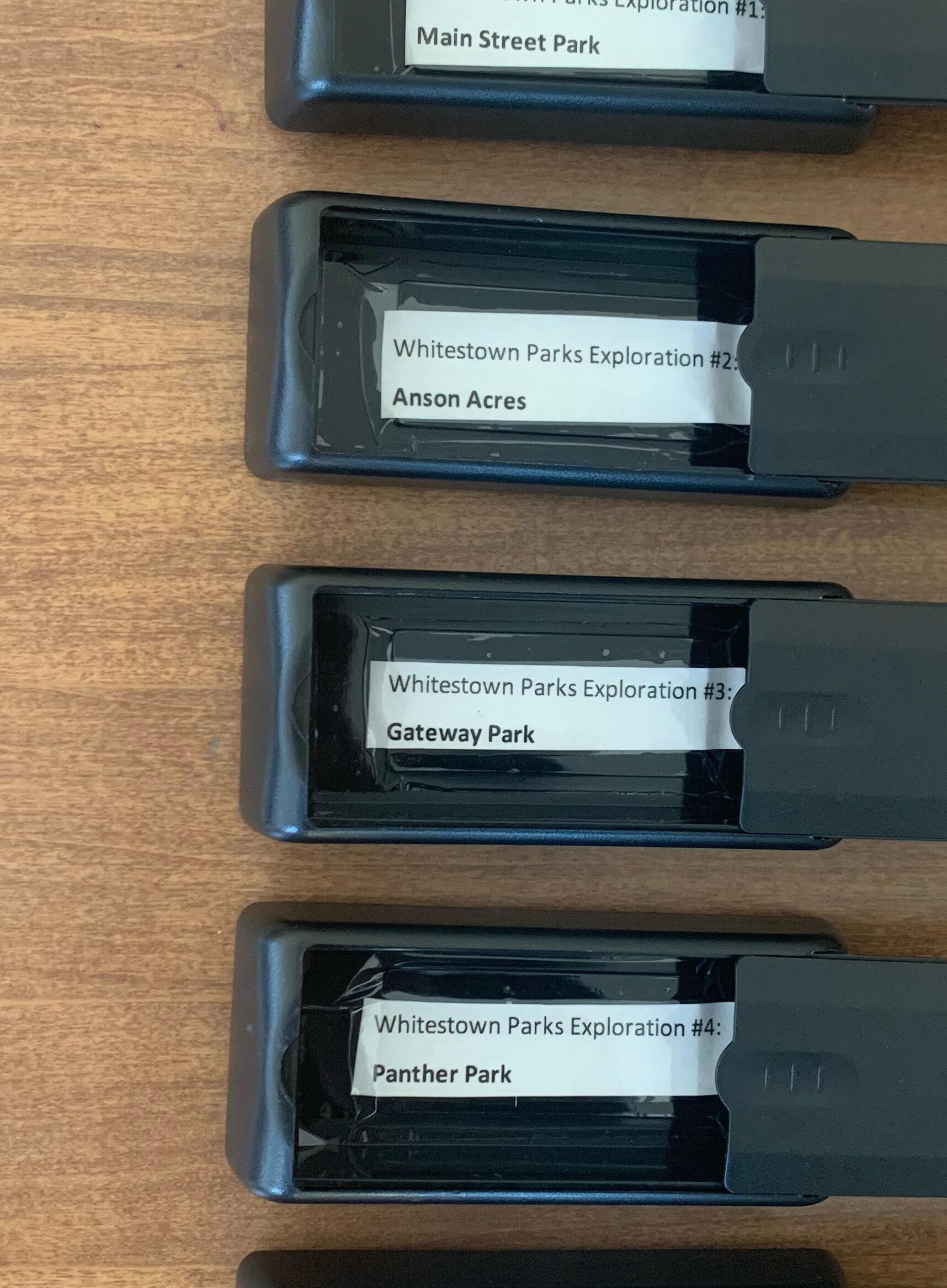
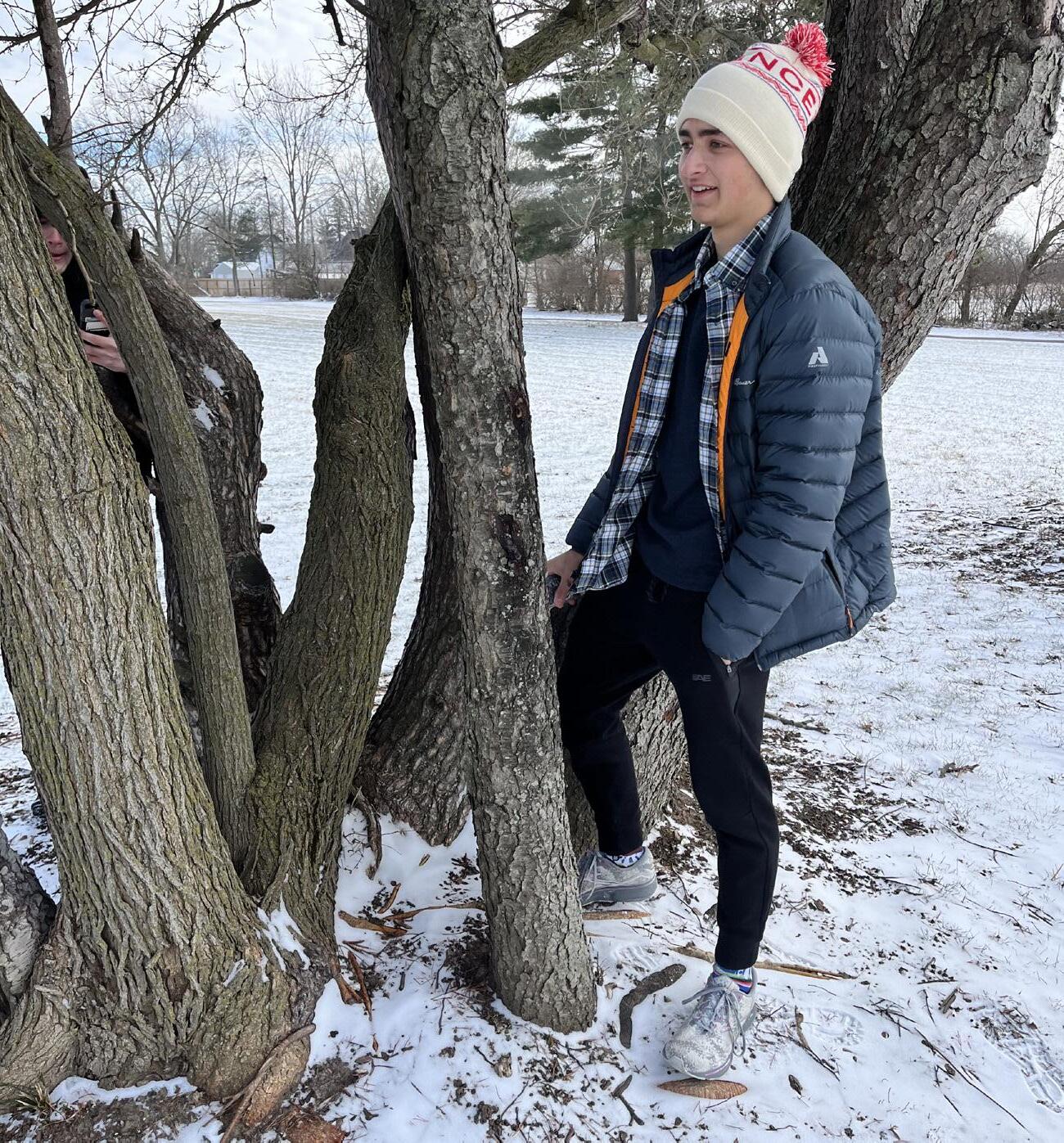
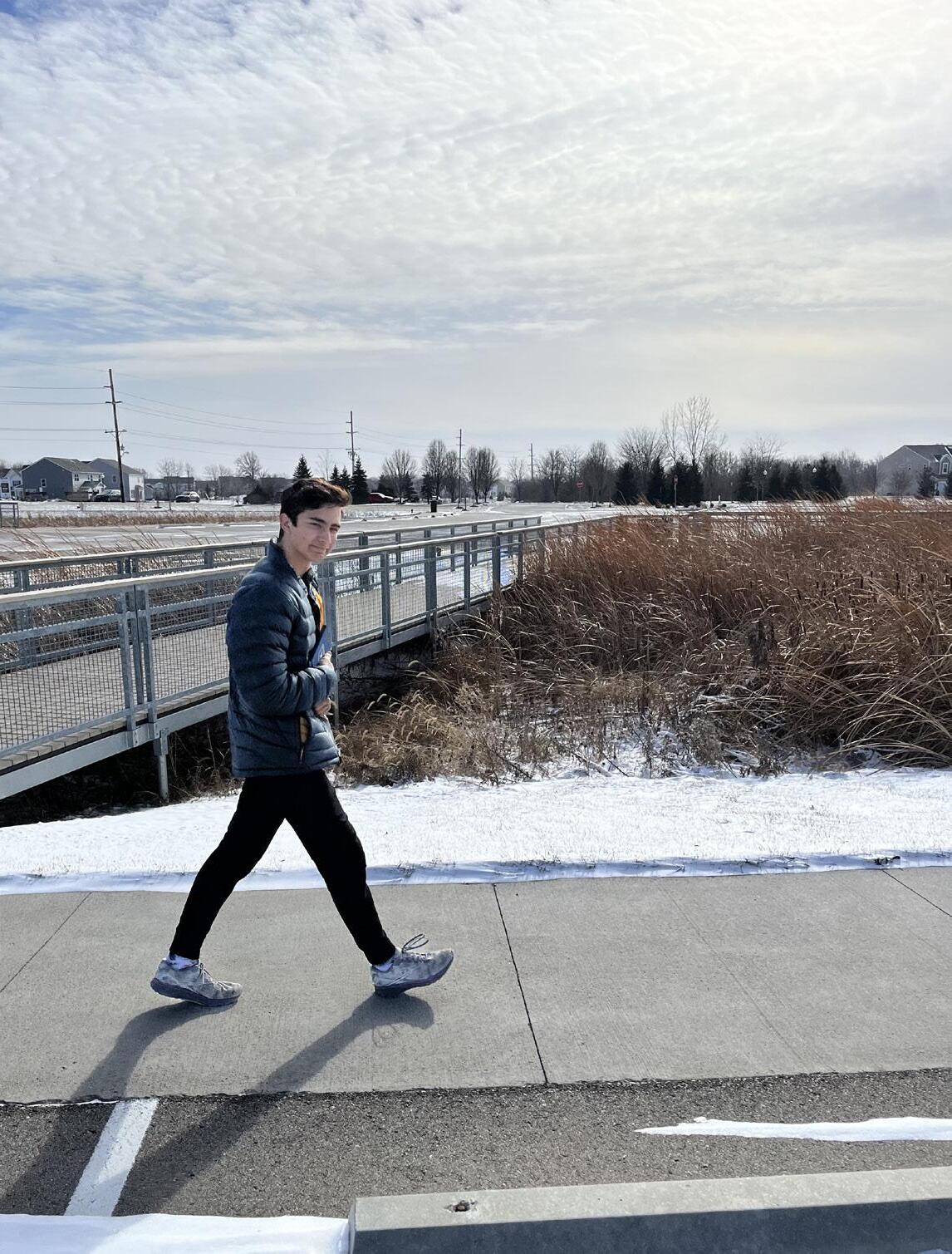
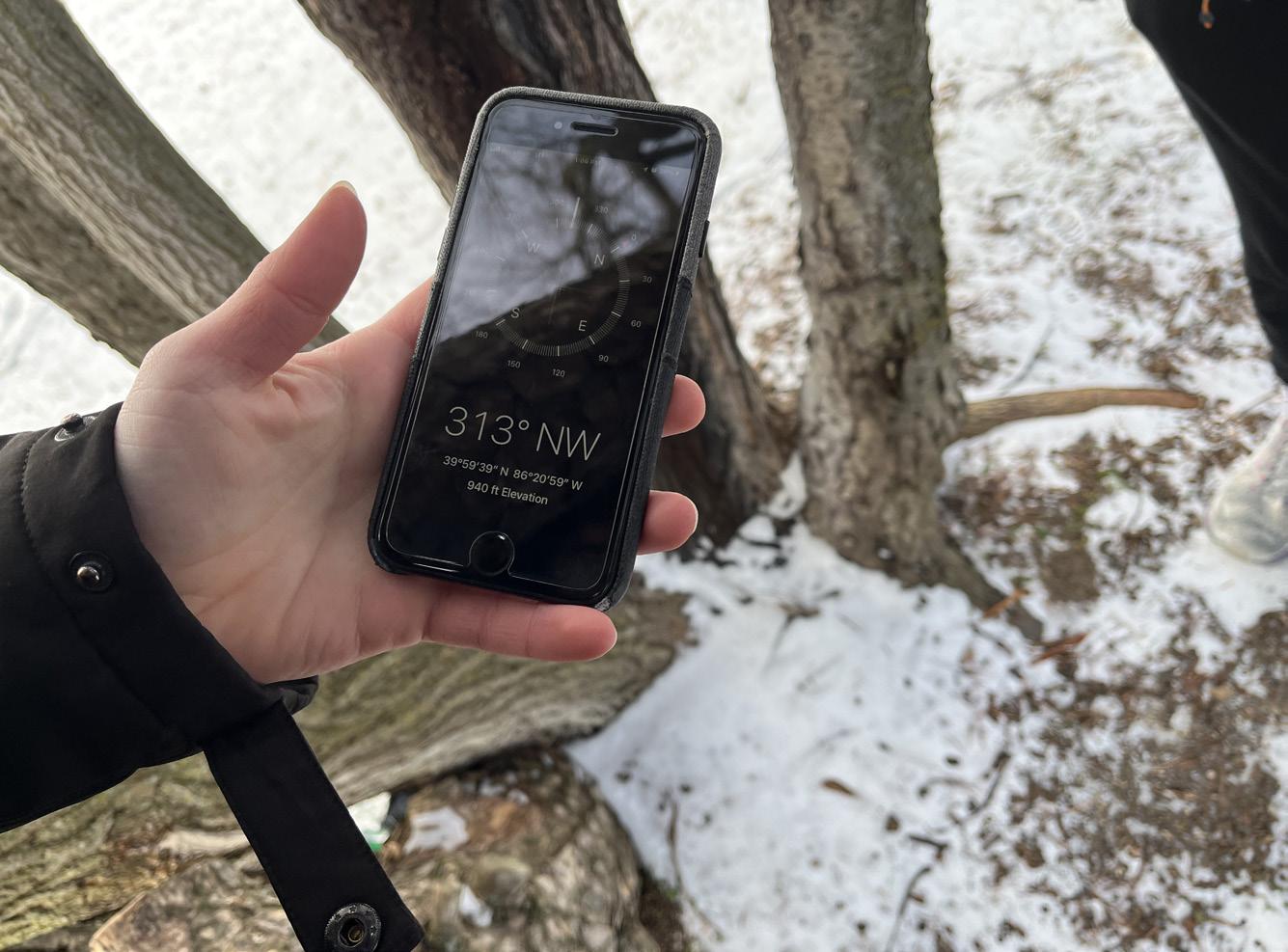




Aaron Coates, a music teacher at Zionsville Community High School, may be known for his musical appearance on the show “Glee.” After an L.A. client discovered his work, Coates’ compositions were featured in the hit series’ debut season. But beyond the screen, his music has reached unexpected heights.
Wanting a change in the music he was using for show choirs, Aaron Coates realized he could start his own music-writing business. He originally established his “side hustle” to write better-fitting pieces for the groups he worked with. After the former director started with show choirs, his repertoire slowly expanded.
“I would hire people my first couple of years and I would end up wanting it to be different, wanting to change this, change that,” Coates said. “I originally just wrote the vocal and piano stuff, then a friend of mine said, you know you can do the instrumental stuff too, it’s just the same as writing for voices. He was right and so I started writing the instrumental things as well.”
Having a thorough music background in composition helped to establish his music writing business. According to Coates, his music education impacted his ability to compose and arrange, along with his own group’s need for arrangements.
Coates’ creative process varies from client to client. Sometimes he starts with a lyric sheet, other times he is sent a recording to model.

“I need to know what the group is made of, like ability levels of the musician–vocal and instrumental–where it fits in the show, how long they want it to be,” Coates said. “Those are the basic things. And then, some clients say, just be creative, do whatever

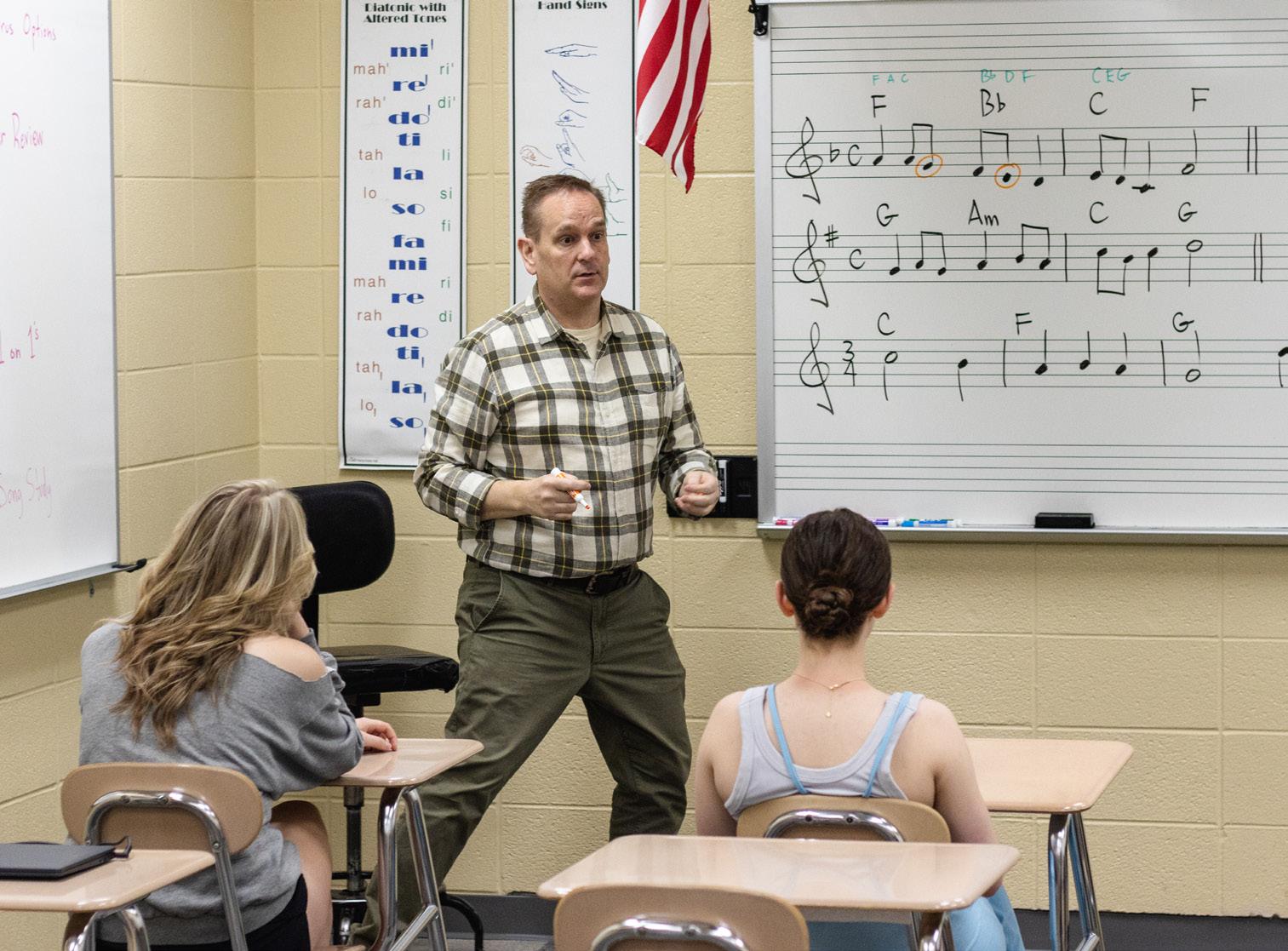
you want.”
His music business season goes from late May until the end of January. He often completes two to three items per week. Not all his students know of his secret job; however, senior Royalaires member Matt Nelson knew a bit about this music arranging.
“There was a show that we actually competed against where [Coates] also arranged the music for them, and they won.” Matt said. “It’s really cool, and I honestly admire it a lot. And I think I would probably do it too later down the line.”
Deana Broge, director of the Zionsville Show Choirs, has worked with Coates in the show choir business and with groups such as the Indianapolis Symphonic Choir. They collaborate on arrangements, teaching, and directing.
“If you are an arranger, you have a mind and an ear that is just brilliant, and we are fortunate to have him here as a resource, as an arranger, as a clinician,” Broge said. “He just helps us with a lot of things with our
combo. When we do design, he’s always very willing to send us his thoughts and help us get to the right recipe for that arrangement.”
Coates has quite a reputation for his original music, also. According to himself and Broge, the ballads he creates are always the best.
“A ballad is fun for me because I feel like, at least in the show choir world, that’s probably where we have the biggest room for creativity. It’s not like we’ve got to dance to this or it’s got to sound like this,” Coates said “There’s a little bit more room for creativity.”
Broge will forever remember working with Coates.
“The snide, snarky comments about how he hated his job every day are ingrained in my brain,” Broge said. “But also he truly cared about the student experience and wanted to push them to think about not just the music aspects of things, but to be to be grateful for the experience to work hard for the opportunity.”
How did you get into cosplay?
T: It started a while ago. I was making my Halloween costume, and I thought “this is really fun.” I ended up making my first costume COVID year and I was just super excited and so into it.
What are a few of your favorite and recent projects?
T: I’m making a movie. I made all the costumes for it and I’m doing a lot of hair and makeup for it. It’s going to be very cool. Besides that, the most recent and favorite thing I’ve done is probably my Wendigo stilt suit. I’ve got stilts on my arms, stilts on my legs, and I’m in this giant costume that’s lumbering around with a really heavy mask with really heavy antlers. It’s really cumbersome to wear, but it’s super fun. I wore it on Halloween, scared some kids.
How long does it take to make a costume?
T: It depends. One took me about one month to make, some took me multiple months, but that’s just because I wasn’t working on it frequently. It was like one time a week that I was working on it, or only on the weekends because I didn’t have much time. But I think the Wendigo definitely took me the longest.
How much time do you average with projects like your movie?
T: That one I cranked out in two weeks because I had a very strict deadline of trying to finish it before I went to my grandparents. But I was putting all day into it, like six or seven hours. A full costume takes me at least 50 hours of work. Last weekend I made a costume for my friend’s birthday, bought the material Saturday, finished it Sunday night. It took me 10 hours straight. I was just working on that to have it done for her birthday and she really liked it, which made me happy.
Are you inspired by any outside media, such as video games or movies?
T: I am. I love looking at all the different
costumes and costume designs in movies, video games, and other media. I think it’s super cool and sometimes I draw inspiration from those for my own designs. I really like [movies] with really elaborate costumes like Star Wars and Indiana Jones, really interesting costume designs that aren’t normally what we see.
Can you describe your creative process?
T: I start out with an idea in my head and then I put it on the paper. I do a sketch and then if I’m feeling cool, I’ll color it, but sometimes I just leave it at the sketch. Then I go out, buy materials, and then line them up on the floor. The patterns are usually super crazy complex. Most people wouldn’t understand what’s happening, but somehow it works in my brain. I cut them out, sew them together, and then I’ve got a costume. If it requires some sort of mask or something else, I sometimes paint that or make something based out of foam and then put materials over that. I love working with materials I’ve never worked with before. It just is super entertaining and fun for me.
How do your friends and family feel about it? What were their reactions to some of your more elaborate projects, like the movies?
T: Their reactions are pretty good. I like showing them what I’m working on and they always seem to freak out and love what I’m doing, which makes me feel happy. It’s gratifying.
Are there any funny experiences that have happened while you’re showing off costumes or filming?
T: Sometimes the costume breaks, which is unfortunate, so I have to fix that right in the middle of filming.
Sometimes if I’m filming something, I’ll forget a piece and then realize after I filmed it. Or I’ll do some crazy stunt like jumping off my back porch and then something will rip or break on the costume, which is also unfortunate. I have to fix that up as well. So last Halloween and the Halloween before that, I was on the stilts. I was jumping out at people, and sometimes it’s really awkward to try to jump out at people while on stilts, and sometimes they fumble and almost fall and break the $60 antlers.
Have you gone out in public in your costumes?
T: I have not gone out in public with any of my costumes really, except for Halloween when I’m out on my front porch. At some point I would like to go out in public in some of my costumes and see how people react, like go down to the Lions Park in the stilt suit. I think that would be funny. I just want to give everyone a fun experience. You’re always going to remember that time when you go to the park and you see a giant deer with a giant skull mask.
 Sauerburger in costume.
Sauerburger in costume.
In the 53
years
of
Zionsville Community High School, student life has always been evolvingBy Avery Wright, Guest Reporter
The bell for class rings and Amanda Pentzer, 1995 Zionsville Community High School class president, grabbed her books and shut her locker door. Lockers, once a staple of student life, today sit empty and go unused. Claire Schleuter, a current Zionsville junior, walks down the long hallway connecting the two sides of the building with her backpack. The bell rings and Pentzer takes a seat next to her best friends in class. So does Schleuter. Though there have been lots of changes in the past years, some things always stay the same. The people make the place.
“I had tons of great memories from Zionsville High School,” Pentzer said. “I'm still friends with a lot of the people that I graduated with.”
Education in Zionsville dates back to the first schoolhouse in 1854, evolving into the establishment of Eagle Township High School in 1910, which eventually became Zionsville Community High School in 1970. Over the years, the school system expanded, with new facilities and a continual renovation and modernization, including the recent expansion of ZCHS this past year.
Amanda Harmon started teaching at Zionsville in 1999.
“When I started this was considered more of a rural community where a lot of the kids had parents who had grown up here and there were a few of the subdivi-
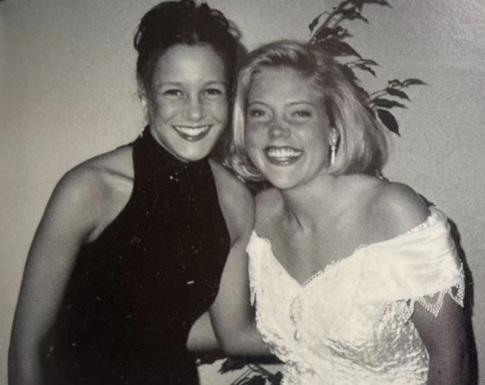
sions that exist now,” Harmon said. “The kids who lived here before were not what you would consider the same socioeconomic class that we see now because it's built up since then.”
The high school originally had 4 main hallways, one for each grade. However, as the population of Zionsville rapidly increased, further development of the school was necessary. The recent construction of the school goes far beyond the physical building but also the students that fill it. Within the last 25 years that Harmon has worked in the building, the student population has almost tripled in size.
“My class in 1995 had 176 in the graduating class,” Pentzer said. “Everybody knew at least something about everybody, and you could try your hand at almost everything because there was room for everybody to try something new as far as activities and sports.”
In addition to extracurriculars, academics have always been on the forefront of the goals at ZCHS but, as the years go on, the expectations for students and their coursework have gotten much more rigorous.
“Expectations of students here have always been high, but we're at the point now where students come back from college saying that college is easier than high school,” Harmon said. “I'm not sure that's always a good thing.”

Getting into the right college is something some students might find themselves worrying about. Schleuter describes it as very overwhelming trying to get into the right school.
“I know that our students seem to be a lot more stressed out and tense, dealing with anxiety and depression at a much wider scale than what I saw back in ‘99,” Harmon said.
As the pressure grows today, she has noticed the increase of mental health issues within the student body.
“There was less emphasis on the stakes that it had for college,” Pentzer said. “It wasn't really a question if you worked hard and got decent grades, you were most assuredly going to go to a school. Much less pressure, maybe less rigor.”
Pentzer was introduced to friends with different backgrounds and interests during her time at ZCHS. The friendships she created in high school stick out as important parts of her experience and she still talks to many of them today. Today, Zionsville students have many opportunities to get involved and find friends in many different classes, sports, and clubs.
“Zionsville tries to do a good job of putting together opportunities for students to create their identity, so I would say make the most of your time here,” Harmon said.
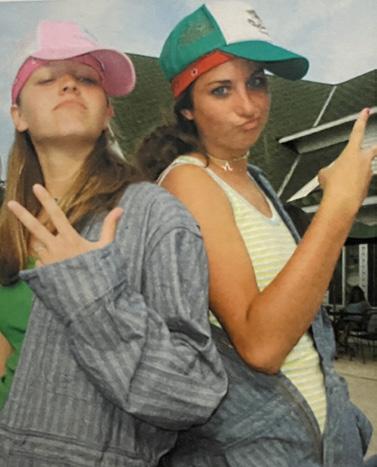


“Bright Future” by Adrianne LenkerBy Emily Duncan, Guest Reporter
Adrianne Lenker is recognized for her work with the indie folk-rock band Big Thief, as well as for her original music. On March 22, she released a new album called “Bright Future.”
The album features a distinctive fusion of melancholy narratives and deep, personal lyrics. She mixes a variety of instruments to allow the listener to feel emotional with the lyrics and music. Many of the songs had a storyline to allow the listener to follow along easily, which made the songs more enjoyable.
Since the album is centered around love and loss, there was a blend of songs that were heartfelt melodies and upbeat tunes. For the songs that were more serious for the listener, there were pianos in the back. This was recognized in “Real House,” which conveyed a sense of fear about growing up. In other songs that made more of a childhood storyline, there were more guitar,

The Avett Brothers, an American folk rock band, released their ninth studio album, “True Sadness” in 2016. “True Sadness” is one of the group’s most successful releases to date. However, many of its tracks were overlooked and the album deserves a review before The Avett Brothers’ summer concert tour with a stop in Indianapolis.
Mixing their signature folk rock feel with a few poppier rock tracks, the album features guitar, banjo, violin, bass, and piano to supplement the vocalists.
The lyrics on “True Sadness” range from soberly poetic to joyfully simple. The first song, which happens to be the group’s most popular song, “Ain’t No Man,” lands on the joyfully simple end of the spectrum. The group tells their listeners that they don’t get bent out of shape when things in life don’t
violin, and funky beats. The song “Fool” contains more family and childhood-centered lyrics.
People who like Phoebe Bridgers, Mitski, or Big Thief would like this album because they share a common denominator of having deeply personal lyrics.
Mitski came to mind while listening to this album, as she repeats lines to highlight their impact on her audience, similar to Lenker. Adrianne Lenker repeated the line, “You come around, I’m ruined,” in the song “Ruined.”
“Bright Future” provides emotional storylines blended with melancholy melodies while making it comforting at the same time. Each song has its storyline along with different beats making the songs unique from each other. There was a good balance between whimsy beats and heartfelt lyrics, making this album enjoyable.
go their way. They sum up their confidence singing, “Ain’t no man, or men that can change the shape my soul is in.”
The other two most notable tracks are “I Wish I Was” and “No Hard Feelings.” “I Wish I Was” is a wistful love letter where the singer desires to be with his love but ponders, “But, if I get too close Will the magic fade?” “No Hard Feelings,” the most complete song on the album, is a vastly different track contemplating the reality of death, but the singer is at peace because they can truly say “I have no enemies.”
“True Sadness” demonstrates The Avett Brothers’ lyrical brilliance, musical taste, and meaningful messages but falls short in cohesion and unity as an album. Hopefully, they can replicate their strengths and build on their style in their newest album, which released on May 17 of this year.
I’m guessing you’ve been to a concert, or at least thought about attending one.
That’s because concerts are enjoyed by millions, but bad concert etiquette can make concerts less enjoyable for everyone. Sometimes, concerts even end early due to people needing better concert etiquette.
Bad concert etiquette is when people “misbehave” at concerts; whether harming others physically or being disrespectful. This can consist of throwing things on stage, pushing people, and recording a showcase, and is disrespectful to both well-behaved concert attendees and the music artists themselves.
Throwing things at concerts has been a growing issue. People either throw things to get the artist’s attention or just to harass them, but either way, you shouldn’t do it. Whether it’s phones, bras, food, water bottles, or anything else, it’s disrespectful and potentially dangerous.
In 2023, Harry Styles was hit with a water bottle at his concert in Chicago, IL, according to the Los Angeles Times. Some artists have gotten injured due to people throwing things on stage before, especially hard objects such as phones. If a musician feels unsafe and walks off stage and the concert ends early, everyone in the crowd wastes their money. It only takes one person out of thousands of people to ruin a concert.
“I’ve been getting hit on stage with things for literally six years,” Billie Eilish
said in an interview with The Hollywood Reporter at the 2023 Barbie premier. “People just get excited and it can be dangerous. It’s absolutely infuriating when you’re up there. When you’re up there, it blows. You know it’s out of love ... [but] you’re in a vulnerable position.”
Shoving people and invading personal space at concerts is also disrespectful and dangerous, sometimes leading to injury or death.
Nine people were trampled at a Travis Scott concert in 2021, resulting in two deaths and seven left in critical condition. The incident was attributed to attendees’ pushing and jostling for a better view of the performance. This tragic event highlights the importance of proper concert etiquette and crowd control measures. Concert organizers and attendees alike must prioritize safety to prevent such incidents in the future.
It is also disrespectful to record an entire showcase you’re attending. I can guarantee the artist does not want to look into the crowd and see a sea full of phones. It is also disrespectful to the people watching the show, whose views may be blocked due to a device being in the way. Most of the time, these videos are never even watched again. Enjoy the moment and put that phone away.
“The people at concerts paid money to be there so, to an extent, they should be allowed to do what they want, but when you
go to a concert you should show respect to the performers,” Theo Salewicz said. Salewicz has been to many concerts and has witnessed people trying to make the concert about them. “Making a concert about you is a big pet peeve and it takes away from the set that people paid for,” Salewicz said during an interview.
Tyler the Creator recently performed at Coachella in California and his billboard to advertise his showcase said, “I would love to see y’all faces and not your phone lights.”
Out of respect for both the artist and your fellow concert attendees, prioritize keeping those phones out of sight.
Back in 2022, I attended a Conan Gray concert at IU. It was a wonderful experience because not every person in the crowd was recording the show. Looking around, I saw the majority of the crowd taking in the show without having their phones out. I appreciate this because I got to do the same without someone’s phone in my face blocking my view.
Concert etiquette is extremely crucial at concerts and could save a life. Everyone wants to have a good time and no one wants to get hurt. We want ZCHS students to remember how important it is to keep your shoes on your feet, hands to yourselves, and phones in your pockets, and enjoy the once-in-a-lifetime experience.


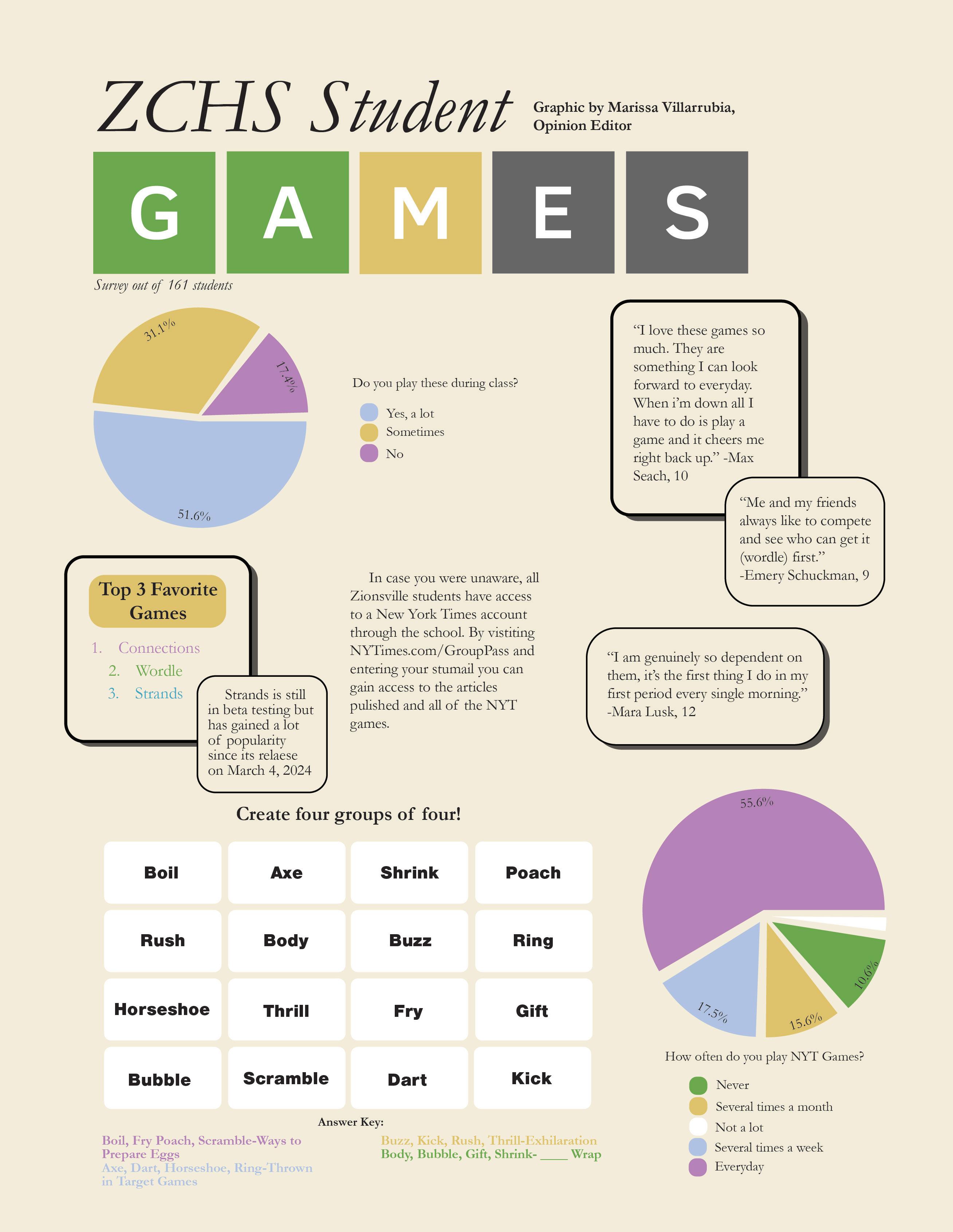
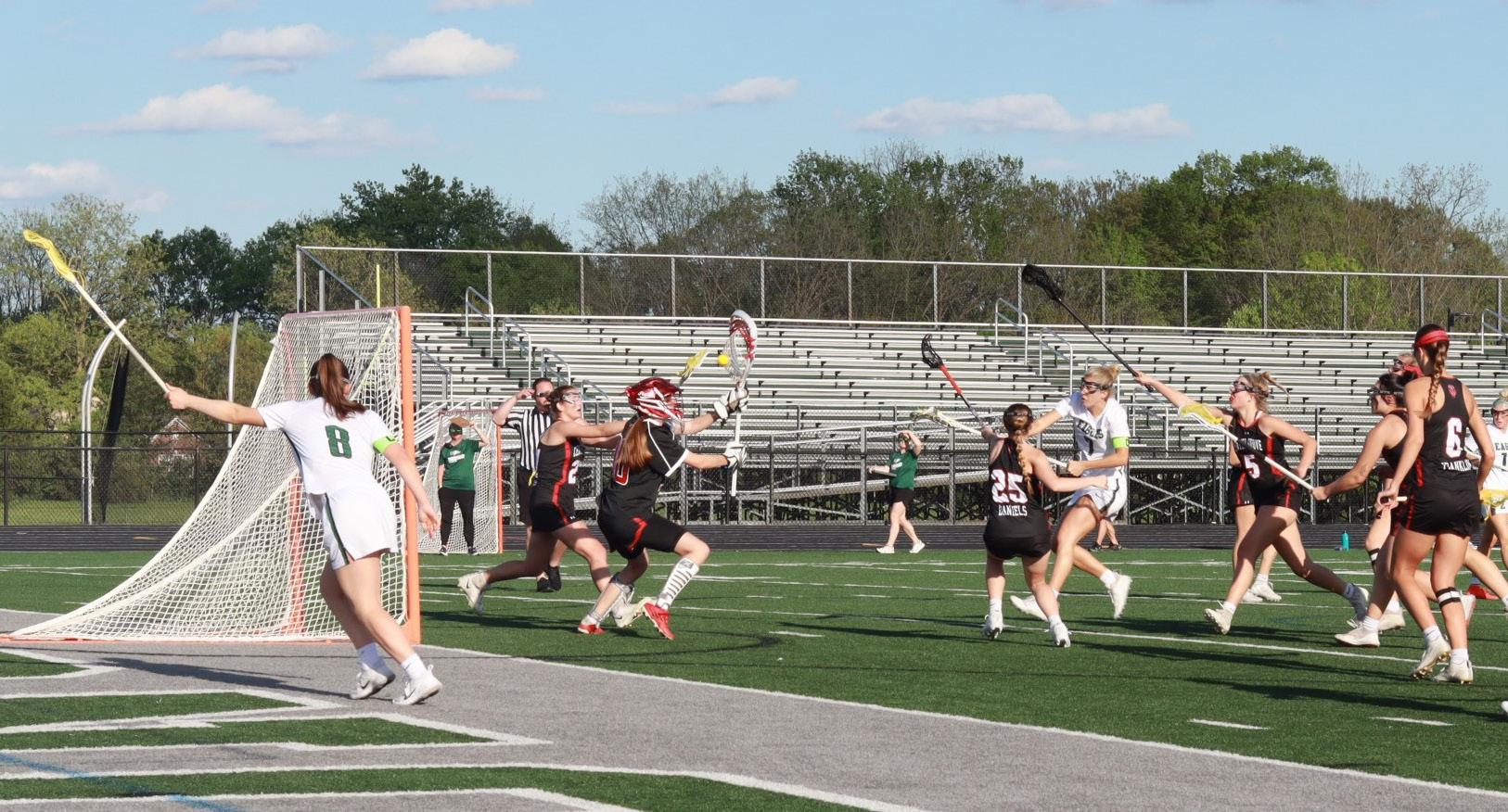
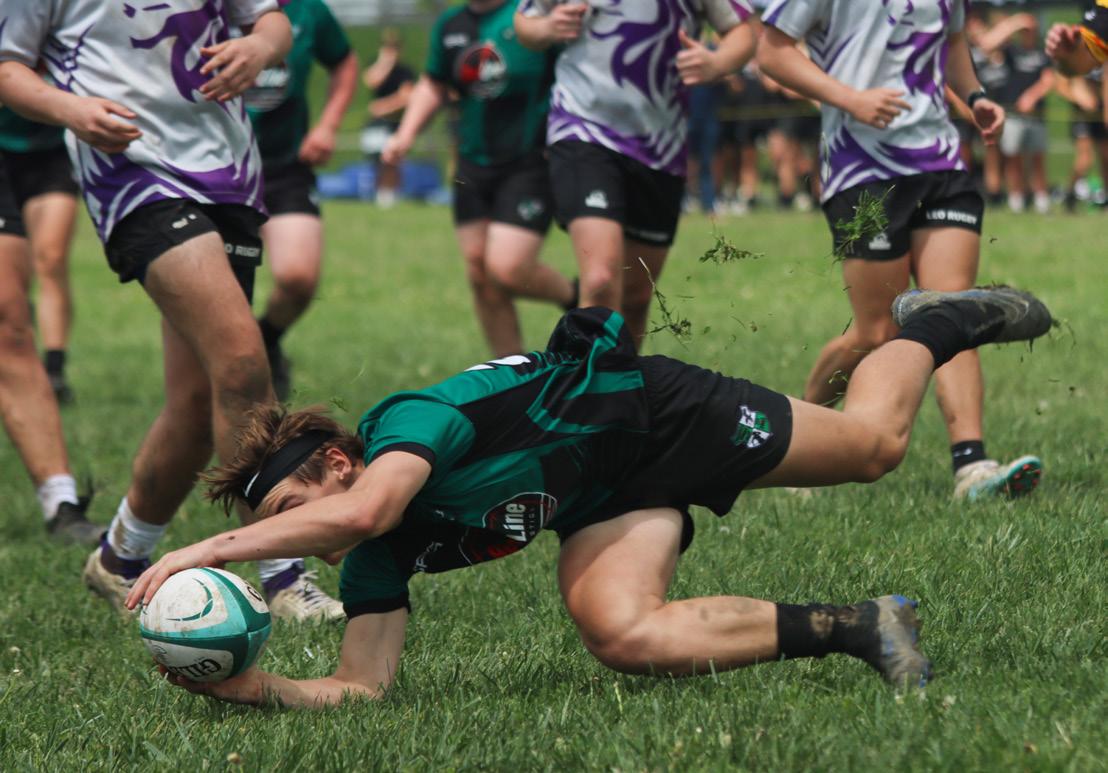
Top left: Senior Reese Godby makes a goal attempt in the girls varsity lacrosse game against Center Grove on April 20. Photo by Ellie Vanderbur
Bottom Left: At a home boys rugby game on May 4, freshman Zade Bankert dives to touch the ball down as he scores. Photo by Emmy Lucas
Bottom Right: Freshman Tess Bradford waits at bat during the varsity softball game against HSE on May 1. Photo by Lilly Steele
